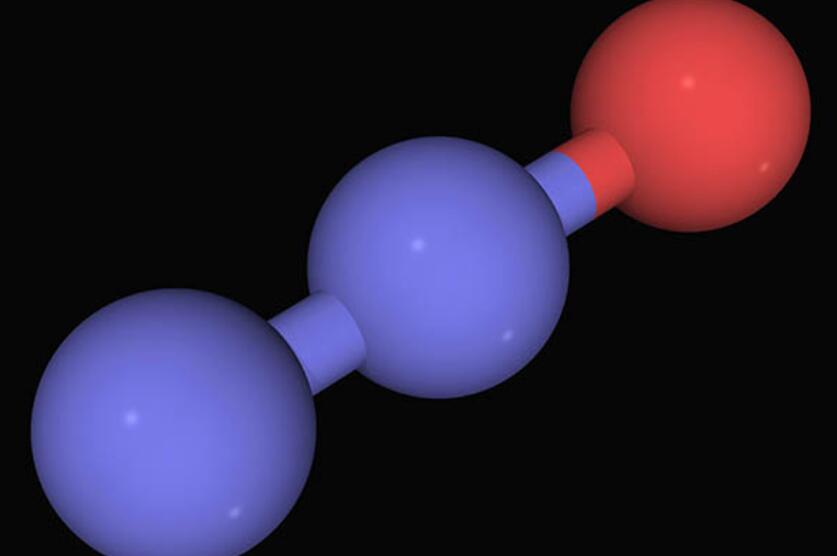
Where to buy Cream Chargers: A Comprehensive Guide
For most of us, whipped cream desserts fall somewhere between a daily necessity and a daily pleasure. And if you are reading this, then you

It’s all giggles and laughter when you inhale laughing gas. Have you ever asked yourself what’s the science behind the laughter? That’s what we want to find out in this guide. We’ll take a look at how the gas works and its mode of action in the brain. Then explore its various uses, including medical, and recreational.

Laughing gas is another name for nitrous oxide among recreational users of nangs. It is a colorless gas with a sweetish taste. Laughing gas is very popular at the dentist’s office and in the food service industry. Also, the euphoric effects of laughing gas have made it popular among recreational users. According to science, nitrous oxide is made up of one oxygen molecule and two nitrogen molecules. But it isn’t a simple mixture of its two constituent gases. It is a unique gas in which the properties of the original gases are lost and new ones are formed. Unlike the original gases that form N2O, nitrous oxide has both a smell and taste. Moreover, laughing gas is more respirable than oxygen and has anesthetic properties.
Laughing Gas has a long and intriguing history that began in the late 18th century. During this era, chemists developed ways to isolate and study gases.
Nitrous oxide or laughing gas was discovered by Joseph Priestly in 1772. This discovery became Humphry Davy’s subject of study in 1798. Later in 1799, Humphry Davy reported his findings on the gas that he referred to as laughing gas. He noted that inhaling laughing gas makes people have euphoric feelings and reduced pain. Laughing gas helped dull the pain from his wisdom teeth. Humphry and his buddies used nitrous oxide recreationally and demonstrated its euphoric effects.
It’s the entertainment value of laughing gas that brought it to the attention of Horace Wells (an American dentist). He used the gas on himself during a dental procedure. Then he started using the gas with his patients after being satisfied with its effects.
We all know that laughing gas can get us on a laughing spree and high. But have you ever wondered how it works?
Laughing gas is an oxide of nitrogen, which has one oxygen molecule and two nitrogen molecules (N2O). It is a non-flammable gas with a specific gravity of 1.53. Like oxygen, nitrous oxide also supports combustion. But it isn’t flammable on its own.
Normally, your lungs are filled with oxygen that you inhale. The oxygen is transferred to the blood. Then the blood transports oxygen throughout the body for normal functioning.
When you inhale laughing gas, it displaces the air that is in your lungs, depriving the blood of oxygen. Consequently, not enough oxygen reaches the brain, making you feel light-headed and nauseous. This reduces your thinking capacity and leads to mental confusion.
Laughing gas also triggers the release of dopamine, which is a hormone that induces the feeling of pleasure. The light-headed feeling and the dopamine effects make you laugh uncontrollably.
Laughing gas is a popular drug at the dentist’s office. It is used for the following purposes.
Laughing gas or nitrous oxide has been used as a sedative since the nineteenth century. It has a mild analgesic effect. But its euphoric effects are significantly high. It helps decrease the movements of patients and the risk of gaggling when undergoing dental procedures. It also increases their communication and cooperation.
Laughing gas only dulls the pain but it doesn’t eliminate it during a dental procedure. It acts on pain receptors in the brain. The gas is most effective in pain relief when it is mixed with oxygen during administration. It’s often used along with local anesthetics for better pain management. The gas is also used during labor in some European countries. But it doesn’t get rid of labor pain. Instead, it helps calm down the pregnant woman.
Some people may find a dental procedure an anxious or nervous experience. To help calm down a patient, a dentist may suggest using a mixture of oxygen and nitrous oxide or laughing gas. The feeling of euphoria helps make a patient happy and more relaxed during a dental procedure.
Nitrous oxide is the drug of choice in most dental procedures. It’s also becoming a popular fad among young people for its euphoric and relaxing effects. People who are high in laughing gas tend to experience giddiness and the urge to laugh uncontrollably.
It’s a popular drug at parties and festivals. Nowadays, people don’t even have to worry about carrying laughing gas from home because balloon vendors are selling it at public and private events.
In some countries, it is not illegal for people of the appropriate age to possess and distribute nitrous oxide in balloons. Some individuals are seen in online videos selling laughing gas in balloons near places of entertainment. A large number of people have also been spotted in some countries doing nangs in social gatherings. It seems laughing gas is slowly and gradually finding its way into entertainment.
Young people who get high on this gas usually assume it is a safe alternative to controlled substances. But that may be far from the truth.
Most recreational users are not away of the risks with some learning about them the hard way after inhaling nitrous oxide.
When dentists administer nitrous oxide to patients, they mix it with oxygen. This ensures their brains receive enough oxygen while under the effects of laughing gas. However, recreational users only inhale pure nitrous oxide, which displaces oxygen in their lungs. So, an excess amount can deprive the brain of oxygen. When the brain doesn’t get enough oxygen, the following effects may manifest:
Laughing gas is known to inactive specific vitamin B12-dependent enzymes that in turn could lead to symptoms of neuropathy.
One of the immediate effects of inhaling nitrous oxide from a balloon is impaired coordination or loss of motor control. If this happens while standing up, a recreational user can fall and get injured. The dangers are usually high when driving. People have been reported to lose control and pass out on the wheel.
If people use laughing gas in conjunction with alcohol, they may receive no greater effect from the combination. But the same cannot be said for every controlled substance out there. So, it’s safe and responsible not to mix nitrous oxide with any other substance.
Medically, nitrous oxide is not considered to be addictive because the effects are short-lived. Usually, a patient leaves the dentist’s office free of any serious effects.
However, inhaling laughing gas recreationally can be habit-forming. Some users may end up being psychologically dependent on the drug. This occurs when the gas becomes an integral part of someone’s life. It becomes increasingly difficult to go by without the quick rush.
When people think they cannot do without doing whippets, they are likely to misuse or abuse the gas.
It’s possible to avoid most potential risks when inhaling laughing nitrous with the help of the following precautionary measures.
It’s safer to fill nitrous oxide into a balloon before inhaling. Breathing the gas directly from the canister can lead to serious dangers.
Earlier in this article we associated laughing gas with loss of coordination and motor control. This means it’s easy for recreational users to fall and hurt themselves.
The immediate effects of inhaling nitrous oxide may be adverse for some people like losing consciousness. A sober partner can call for help if such a thing happens.
Choose an environment that is well-ventilated to inhale nitrous oxide. Also, breathe enough air before pumping laughing gas into the lungs.
Don’t confuse laughing gas with other substances. It’s extremely important to buy from brands that sell pure, food-grade nitrous oxide.
It’s wise for recreational users to observe themselves and ensure that they are not becoming psychologically dependent on nitrous oxide.
Although it is not a primary treatment, laughing gas is featured in the field of psychology. According to research, laughing can be used to decrease depressive symptoms.
According to some studies, laughing may present the following therapeutic benefits in psychology.
In some studies, patients who were administered nitrous oxide experienced some reduction of depressive symptoms. Research suggests that laughing gas and ketamine may provide similar treatment. So far experts have recorded a reduction in symptoms and not a complete treatment response. More studies are still being conducted on the potential of laughing gas to treat post-traumatic stress disorder.
Anyone who decides to inhale laughing gas to get high expose themselves to potential risk and side effects.
Dentists are medical professionals who have the expertise and equipment needed to administer laughing gas safely to patients. However, those who self-administer the gas should follow the following guidelines.
Aside from medical and food preparation applications, nitrous oxide is not recommended for recreational use. The onset of the effects is immediate, with the peak around 1 minute after inhaling. But the side effects can be many depending on the condition of the user and the dose.
It is highly risky to inhale laughing gas from the cylinder it is stored in because of the high constant pressure. The pressure at which nitrous oxide leaves a cartridge or tank may be too high for your lungs to handle. This could rupture and damage the lungs. Moreover, the gas tends to be too cold when leaving the cylinder. So, the risks of getting frostbite are incredibly high.
You can expect to feel a quick rush followed by giddiness, loss of balance, laughter, and hallucinations. But most of these are the desired feelings. The worst may also happen if you breathe too much-laughing gas.
An excess dose of nitrous oxide can cause several unwanted effects, such as:
Long-term or prolonged inhalation of the gas may cause a deficiency of vitamin B12, anemia, nerve damage, and tingling or pain in fingers and toes.
Laughing gas is generally considered safe as its effects are short-lived when used properly. But recreational use can be associated with serious and dangerous effects.
People are unlikely to get hurt from unsteadiness and disorientation caused by inhaling nitrous oxide. However, excessive use of laughing gas can be dangerous. It may irritate the respiratory tract and cause severe cases of oxygen deprivation.
There is no denying the fact that the popularity of laughing gas has spiked and will continue to increase. People nowadays know that they can feel the effects of laughing gas outside the dentist’s office. That’s why recreational users should learn as much as they can about the science behind the laughter.
In addition to its medical uses, more studies are carried out on the potential for nitrous oxide to treat mental health conditions. Also, further research on potential risks, precautions, and long-term effects may be conducted in the future.

For most of us, whipped cream desserts fall somewhere between a daily necessity and a daily pleasure. And if you are reading this, then you

Image sourced from m.indiamart.com At StarWhip, we understand the importance of fast and efficient whipped cream charger delivery. That’s why we’re excited to introduce our

In today’s digital age, online shopping has become a staple for many. From clothes to electronics, almost everything is available at the click of a

Laughing gas, scientifically known as nitrous oxide (N2O), has various applications ranging from medical to culinary. Whether you’re a dentist looking for sedation options, a

In recent times, there has been a significant buzz around the age requirement for purchasing whipped cream chargers, especially in New York. The question arises

Whipped cream chargers have revolutionized the culinary world, making it easier than ever to create fluffy, delicious whipped cream in seconds. But a common question